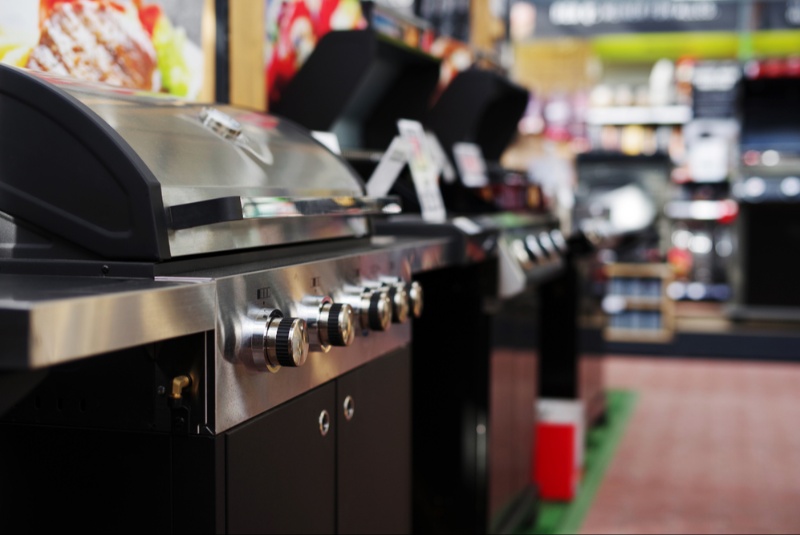In the quest for culinary excellence and convenience, a high-performance blender stands as a cornerstone appliance in modern kitchens. Whether it's for making smoothies, soups, or sauces, the right blender can transform your food preparation experience. However, with a myriad of options in the market, choosing the best one requires informed decision-making. This 1,300-word article aims to guide you through the process, focusing on crucial aspects such as power, durability, and functionality, ensuring you invest in a blender that meets your needs and exceeds your expectations.
Understanding Blender Power and Speed
The effectiveness of a blender largely hinges on its motor power and speed. High-performance blenders typically have higher wattage and RPM (revolutions per minute), providing the ability to blend tougher ingredients smoothly. This section will delve into why motor power is crucial and how speed settings affect blending efficiency, guiding you on what to look for in terms of power and speed for your blending tasks.
Assessing Durability and Build Quality
Durability is a key factor in choosing a high-performance blender. A blender with a robust motor, sturdy blades, and a well-constructed jar will not only last longer but also perform better. This part of the article will discuss the importance of build quality, including materials used for the jar (such as glass or high-strength plastic) and the type of blades, offering insights into selecting a blender that withstands frequent use and time.
Jar Size and Design: Matching Your Needs
The size and design of the blender jar are important for both functionality and convenience. Larger jars are great for preparing meals for families or entertaining, while smaller jars suit individual use or small-batch recipes. This section will guide you on choosing the right jar size and design, considering factors like the shape of the jar, which can influence blending efficiency, and the ease of pouring and cleaning.
Versatility and Multifunctionality
High-performance blenders often come with features that extend beyond basic blending. From grinding grains and nuts to heating soups through friction heat, these multifunctional appliances can replace several kitchen tools. This part of the guide will explore the additional functions and settings available in high-performance blenders, helping you choose a model that maximizes kitchen efficiency and culinary creativity.
Ease of Use and User Interface
User-friendliness is paramount in kitchen appliances. High-performance blenders with intuitive controls, clear settings, and easy-to-read displays make the blending process smooth and hassle-free. This segment will focus on the importance of a user-friendly interface and how to assess ease of use in different blender models.
Cleaning and Maintenance
Ease of cleaning is a crucial aspect of any kitchen appliance. Blenders with dishwasher-safe components or self-cleaning functions save time and effort. This part of the article will discuss features that contribute to easy maintenance and cleaning, ensuring your blender remains a convenient and hygienic tool in your culinary arsenal.
Noise Level Considerations
Blenders can be loud, particularly high-powered models. The noise level may be a consideration, especially if you live in an apartment or have noise sensitivity. This section will address how to check for and compare the noise levels of different blenders, helping you choose a model that balances power with a tolerable noise output.

Safety Features
Safety features in high-performance blenders, such as secure lid locks, overload protection, and thermal cutoffs, ensure safe operation. This part will highlight essential safety features to look for, promoting a safe blending experience in your kitchen.
Aesthetic Appeal and Design
The aesthetic design of a blender can also play a role in your selection. With a range of styles and finishes available, from sleek and modern to classic and robust, the look of the blender can complement your kitchen décor. This segment will encourage consideration of the blender’s design and how it aligns with your personal style and kitchen aesthetics.
Energy Efficiency and Environmental Impact
Energy efficiency is an important consideration for environmentally conscious consumers. Efficient blenders consume less power while delivering high performance. This part of the guide will offer tips on choosing an energy-efficient blender, contributing to lower electricity bills and a reduced environmental footprint.
Price and Value for Money
High-performance blenders can vary significantly in price. Balancing budget constraints with desired features and quality is key. This segment will assist you in finding a blender that offers the best value for your money, prioritizing features that are most important for your specific needs.
Brand Reputation and Warranty
Choosing a blender from a reputable brand often guarantees a level of quality and reliability. Well-known brands typically offer better warranties and customer service. This section will discuss the importance of considering brand reputation, warranty length, and the coverage offered, ensuring a secure investment in your kitchen appliance.
Reviews and Consumer Feedback
Reading reviews and seeking recommendations can provide insights into the real-world performance and longevity of blenders. This part of the guide will emphasize the importance of considering user experiences and reviews in making an informed decision.
Crafting Culinary Excellence
In conclusion, selecting the right high-performance blender involves careful consideration of power, durability, functionality, and user-friendliness. By thoroughly evaluating these aspects, you can choose a blender that not only meets your culinary demands but also enhances your overall cooking experience. Remember, the ideal blender is one that seamlessly integrates into your kitchen routine, transforming ingredients into culinary masterpieces with ease and efficiency.




